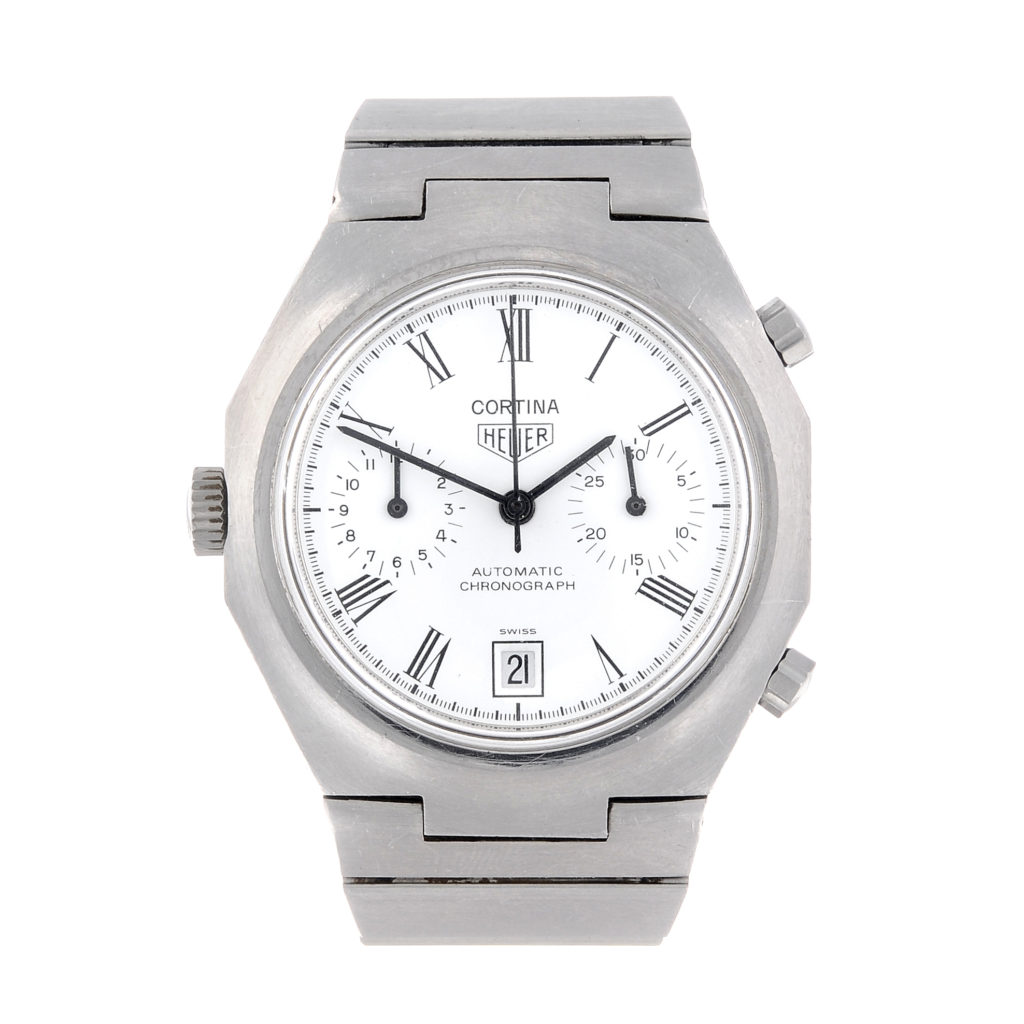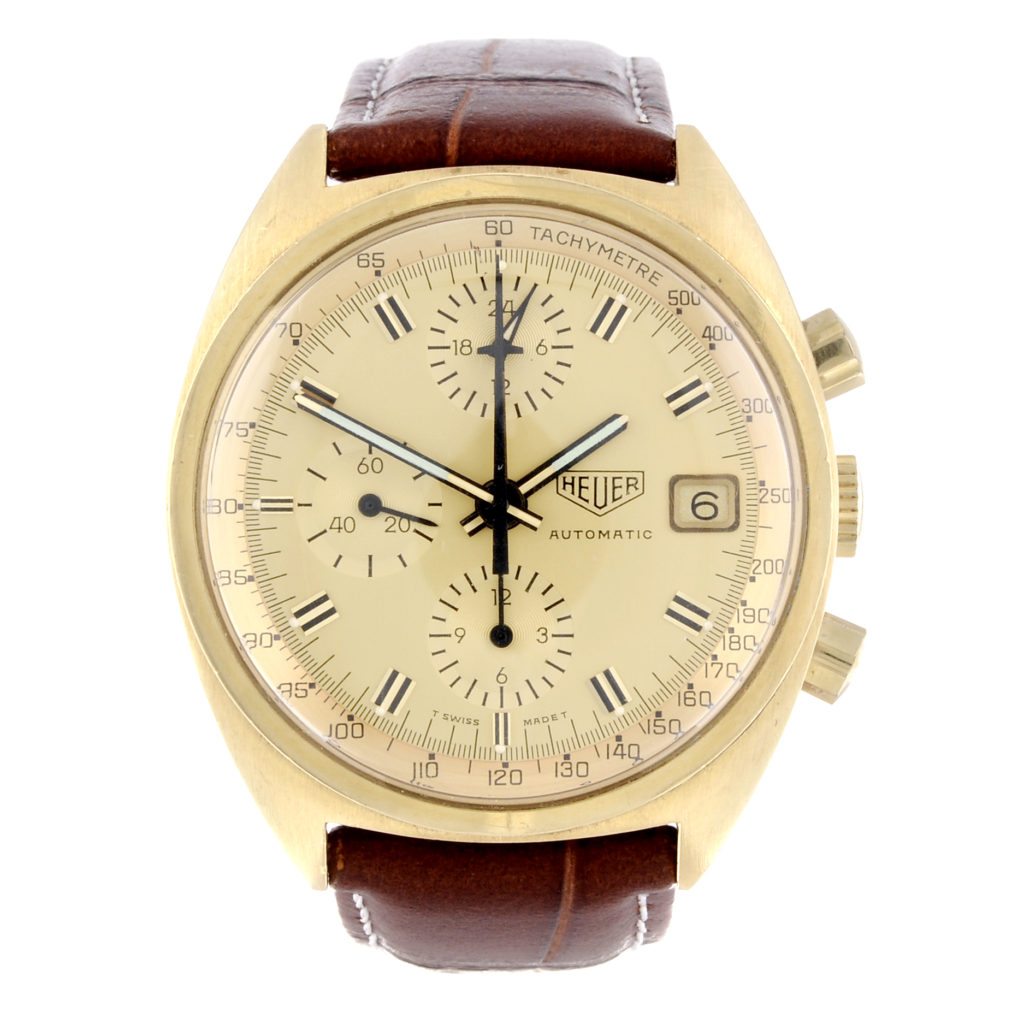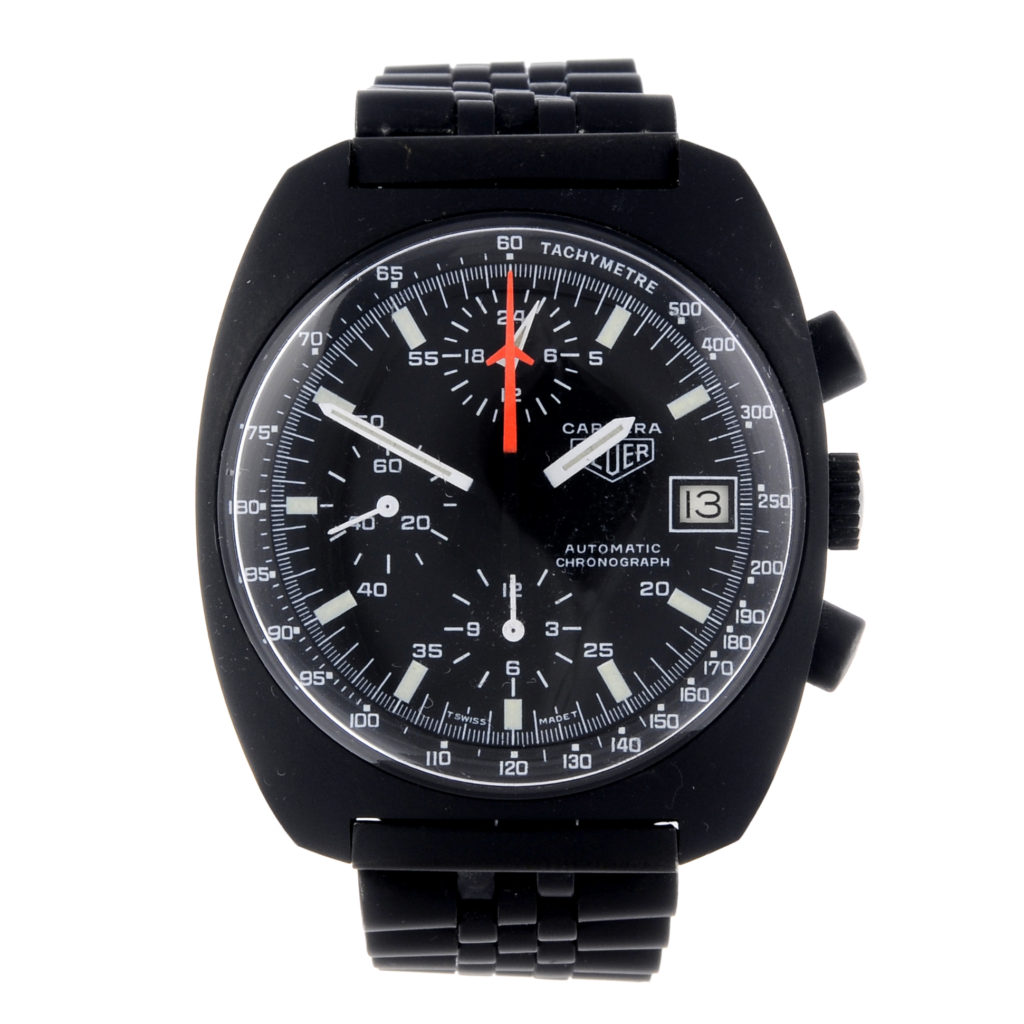Heuer used a variety of chronograph movements over the years evolving as the pressures of technological advance, the buying public or the company accountants took their turns. The most sought-after engines are those found in the earliest Autavia and Carrera watches, such as the Valjoux 72 which also sits behind the dials of the first Rolex Daytonas, Breitling AOPA Navitimers, Enicar Sherpagraphs and other auction star-performers.
 A gentleman's stainless steel Cortina chronograph bracelet watch.
A gentleman's stainless steel Cortina chronograph bracelet watch.
Less appreciated, although with their own cult following, are the chronograph movements from the latter days of Heuer before the brand evolved into TAG Heuer. In 1974, a mere five years after the launch of the world’s first automatic chronograph movements, the Lemania 5100 appeared and in 1983 it found its first use in a Heuer. The 5100 was a remarkable evolution in five years, being cheaper to make, easier to service and using innovative materials such as Dupont’s Delrin, a light, tough, self-lubricating polymer in its construction. Its appeal was not only the cost of production, it was robust and shock resistant and the dial layout, moving the minute recording hand to the central dial stack increased legibility; no wonder the watch was adopted by the armed forces of several nations.
While legibility and durability would be seen as obvious advantages for the key motorsport market that Heuer targeted, there is a reason that the movement was only used by the brand in significant quantities between 1983 and 1886. Before this time Heuer had their own ‘Chronomatic’ derived line of movements but during in 1982 Heuer was in financial trouble and Jack Heuer was forced to sell to a new group of investors one of which was Lemania. When times are tough, a low-cost movement from someone who just happens to own you is not just a wise choice, it is an inevitability.
 A gentleman's 18ct yellow gold chronograph wrist watch.
A gentleman's 18ct yellow gold chronograph wrist watch.
And so, the 5100 proliferated through the collection from the quirky Cortina to the 18ct Golden Hours chronograph until Heuer was sold again in 1985. The Heuer went to Techniques d’Avant Garde and became TAG Heuer at which point the owner-obligation disappeared along with most of the 5100 models.
This brief flirtation with the 5100 movement has left Heuer with some great looking chronographs with a solid, utility movement that is sadly discontinued. The tell-tale central minute recorder is such an aid to visibility that a number of current watch manufacturers are taking great pains to modify existing calibres in order to bring it back.
 A gentleman's PVD-coated stainless steel Carrera chronograph bracelet watch.
A gentleman's PVD-coated stainless steel Carrera chronograph bracelet watch.
The Watch Sale catalogue is now available to view online and in person at the following times:
18th July 2017 12pm – 7pm (London)
22nd July 2017 11am – 4pm (Birmingham)
24th July 2017 10am – 4pm (Birmingham)
25th July 2017 8.30am – 11.00am (Birmingham)
The auction will take place on Tuesday 25 July, starting at 11am.












